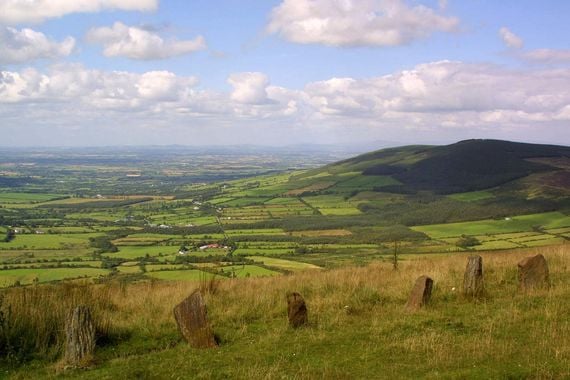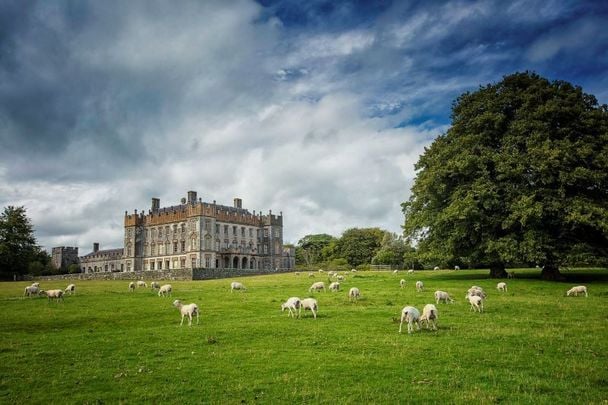From the meaning of its name to common surnames, its history and top attractions here's a roundup of the highlights of Carlow.
Irish Name: Ceatharlach, "Place of Cattle" or "Four Lakes"
Nickname: The Dolmen County, The Scallion Eaters
Population: 56,932 (as of 2019)
Area: 346 square miles
Province: Leinster
County Town: Carlow
GAA Colors: Green, red and yellow
Common Surnames: Byrne, Doyle, Farrell, Kavanagh, Kinsella, Lawler/Lalor, McDonald/McDonnell, Murphy, Nolan, Walsh
Famous People with Carlow roots: Walt Disney, Frank O'Meara, Saoirse Ronan, George Bernard Shaw, Patrick Robert Reid, Arthur MacMurrough-Kavanagh
A brief history: County Carlow, the second smallest county in Ireland, lies on the banks of River Barrow, to the south-east of Dublin.

Nine Stones, Mount Leinster, County Carlow.
History
Settlement in Carlow pre-dates written Irish history. The most notable prehistoric site in Carlow is Browne’s Hill Dolmen, a megalithic portal tomb.
Carlow was the site of many early Christian settlements, which are still evident today at sites such as St Mullin’s monastery, Old Leighlin, St Comhgall, and Mary's Abbey.
This small county was a Gaelic stronghold long before it was a Viking and Norman settlement. The first castle in Carlow was built by the invading Normans and by the middle of the 14th century over 150 castles had been built.
Built between 1207 and 1213, Carlow Castle is thought to have been built by William the Marshall, Earl of Pembroke and Lord of Leinster, to guard a vital river crossing. In 1361 Lionel, the son of Edward III, arrived in Ireland. He moved the King's Exchequer temporarily to Carlow and built a wall around the town. The Castle was attacked on numerous occasions and survived.
In 1814 Dr. Phillip Middleton attempted to convert it into a lunatic asylum. He undermined the foundations so badly that all remains of the castle are two towers and a wall.
Ireland’s Great Hunger wiped out half of the population of County Carlow. A center of agriculture, the first outbreak of the dreaded potato blight was reported in County Carlow, in September 1845.
Key attractions
Carlow is home to 807 different ancient field monuments and is often referred to as the “Celtic Center of Ireland.” Just one example is Browne’s Hill Dolmen, which boasts a capstone estimated to weigh over 100 tons, the largest in Europe.
Duckett’s Grove, near Carlow town, is a Georgian home of a noted Anglo-Irish family. Built in the Gothic revival style its towers, turrets, and ivy-clad structure, which give it a fairytale feel.
Leighlingridge Castle is built strategically on the River Barrow. The original structure was built in 1180, by the Norman Hugh de Lacy. What remains today is the west half of a 14th-century round tower and part of the bawn.
* Originally published in 2016, updated in 2025.




Comments